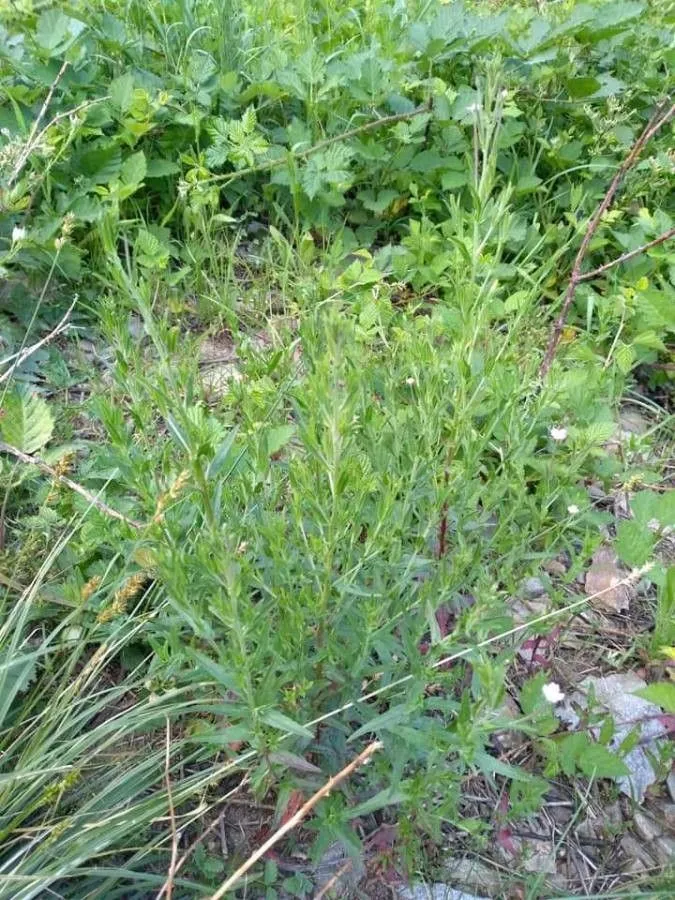
Author: (Schreb.) Schreb.
Bibliography: Spic. Fl. Lips.: 147 (1771)
Year: 1771
Status: accepted
Rank: species
Genus: Epilobium
Vegetable: False
Observations: Europe to Xinjiang
Pale willowherb, scientifically known as Epilobium roseum, is a noteworthy member of the Onagraceae family. This elegant herbaceous plant was meticulously documented in Spicilegium Florae Lipsicae, a significant botanical reference published in 1771. With its genetic roots stretching broadly across Europe to the far reaches of Xinjiang, this species illustrates the diverse adaptability and ecological breadth of willowherbs.
Epilobium roseum presents a delicate aesthetic appeal, characterized by its pale blossoms that lend the common name “pale willowherb.” This plant thrives in a variety of habitats, often favoring damp and meadow-like environments where moisture is plentiful, yet it shows remarkable resilience in adapting to different soil types and climatic conditions along its extensive geographical range.
The botanical study and recognition by Johann Christian Daniel von Schreber, a distinguished botanist whose name is honored in the official author citation (Schreb.) Schreb., adds a layer of historical significance to pale willowherb. Schreber’s contributions to botany during the 18th century include a significant focus on cataloging and describing plant species, and his work continues to influence modern plant taxonomy.
In its natural habitat, Epilobium roseum plays a vital role in the ecosystem, supporting pollinators and contributing to the intricate web of flora that characterizes temperate regions. The plant’s ability to spread and naturalize across a wide area highlights its ecological importance and connection to the botanical heritage of many countries.
Understanding the botanical characteristics and historical context of the pale willowherb enriches our appreciation for this modest yet resilient member of the Onagraceae family, illustrating the interconnectedness of botanical history, ecological function, and the natural beauty of plant species distributed from Europe to Xinjiang.
Dan: rosen-dueurt
Deu: rosenrotes weidenröschen
Nld: bleke basterdwederik
Fra: epilobe rosée
Nob: greinmjølke
Nno: greinmjølke
Swe: grendunört, rusohorsma
Eng: pale willowherb
Fin: rusohorsma
Cym: helyglys blodeugoes, helyglys coesig, helyglys gwelw
En: Pale willowherb
Be: Скрыпень ружовы
Zh: 长柄柳叶菜
Cs: Vrbovka růžová
Da: Rosen-dueurt
Nl: Bleke basterdwederik
Et: Roosa pajulill
Fi: Rusohorsma
Fr: Epilobe rosé, Epilobe rosée, Épilobe rosé, Épilobe à fleurs roses
De: Rosarotes Weidenröschen, Rosenrotes Weidenröschen
It: Garofanino roseo
Nb: Greinmjølke
Nn: Greinmjølke
Fa: بید علفی قرمز
Pl: Wierzbownica bladoróżowa, Wierzbownica różowa
Sk: Vŕbovka ružová
Sv: Grendunört, Rusohorsma
Cy: Helyglys Blodeugoes, Helyglys Coesig, Helyglys Gwelw
© copyright of the Board of Trustees of the Royal Botanic Gardens, Kew.
© copyright of the Board of Trustees of the Royal Botanic Gardens, Kew.
© copyright of the Board of Trustees of the Royal Botanic Gardens, Kew.
Taken Jul 4, 2021 by k.dimitrov d (cc-by-sa)
Taken Aug 5, 2022 by Elzbieta Turecka (cc-by-sa)
Taken May 20, 2022 by Emeline Scanzi (cc-by-sa)
Taken Jul 27, 2022 by Sabalotta Sabalotta Langstrumpf (cc-by-sa)
Taken Jul 27, 2022 by Sabalotta Sabalotta Langstrumpf (cc-by-sa)
Taken Aug 2, 2022 by Denisa Regine Novotná (cc-by-sa)
Taken Jul 4, 2021 by k.dimitrov d (cc-by-sa)
Taken Jul 29, 2022 by mike (cc-by-sa)
Taken Jun 28, 2022 by H Niels (cc-by-sa)
Taken Aug 2, 2022 by Denisa Regine Novotná (cc-by-sa)
Taken Jul 4, 2021 by k.dimitrov d (cc-by-sa)
Taken Jul 27, 2022 by Sabalotta Sabalotta Langstrumpf (cc-by-sa)
Taken Jul 25, 2022 by Jessica Jenkins (cc-by-sa)
Ph maximum: 7.5
Ph minimum: 7.0
Light: 8
Atmospheric humidity: 9
Bloom months: [‘jun’, ‘jul’, ‘aug’, ‘sep’]
Soil nutriments: 7
Family: Myrtaceae Author: (F.Muell.) K.D.Hill & L.A.S.Johnson Bibliography: Telopea 6: 402 (1995) Year: 1995 Status:…
Family: Rubiaceae Author: Pierre ex A.Froehner Bibliography: Notizbl. Bot. Gart. Berlin-Dahlem 1: 237 (1897) Year:…
Family: Sapindaceae Author: Koidz. Bibliography: J. Coll. Sci. Imp. Univ. Tokyo 32(1): 38 (1911) Year:…
Family: Asteraceae Author: A.Gray Bibliography: Pacif. Railr. Rep.: 107 (1857) Year: 1857 Status: accepted Rank:…
Family: Fabaceae Author: Medik. Bibliography: Vorles. Churpfälz. Phys.-Ökon. Ges. 2: 398 (1787) Year: 1787 Status:…
Family: Aspleniaceae Author: (Cav.) Alston Bibliography: Bull. Misc. Inform. Kew 1932: 309 (1932) Year: 1932…